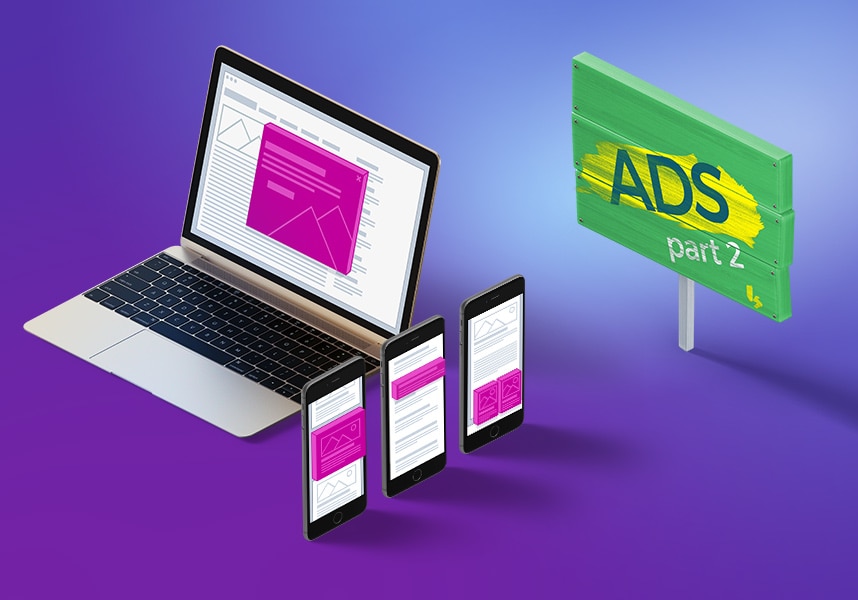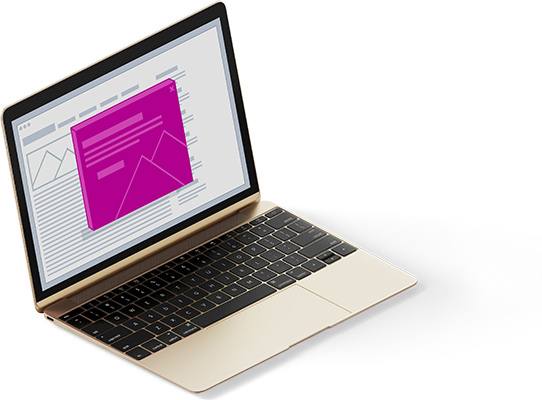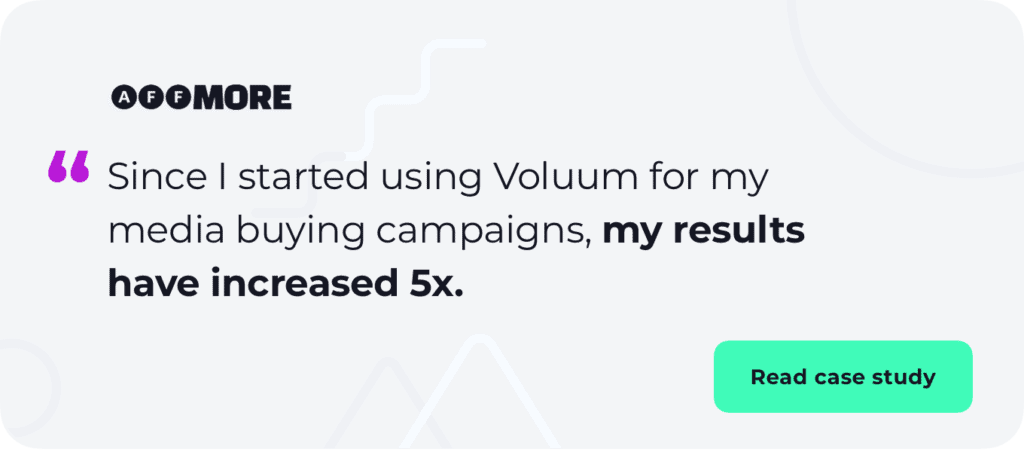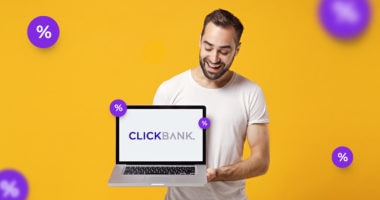In part one of this article, we presented you with two forms of ads in digital marketing – e-mail and display ads. Even though they’re popular, they’re not exactly effective. That’s why advertisers took steps to revolutionize the online advertising industry. Keep reading to find out what alternatives prove to be efficient in affiliate marketing.
Pop Ads
Pop ads have come a long way since their inception in the mid-‘90s. It all began with pop-ups, ads that opened up in a new browser window and obscured the view. Later, pop-unders were introduced, which worked in a similar manner, but were displayed in the background, rather than on top of the browser. As browser developers implemented solutions to block pop ads by default, this kind of advertising had to be adjusted.
Pop ads these days are often displayed in form of interstitials – ads that come up and cover the majority (if not the entire) website. Interstitials often react to mouse movement, so, for example, whenever a user attempts to mouse over to exit the website, an ad gets displayed to garner their attention.
Interstitials are outstanding in lead generation. Plenty of companies saw their number of newsletter subscribers grow as much as 20% after implementing an interstitial on their site.
Interstitials haven’t brought an end to the traditional pop ads, however. Neither have browsers and ad-blocking plugins. Pop new ad format can still be seen on certain high-traffic websites and some of the biggest companies in the world still advertise that way. We’re talking the Facebooks, Porsches, and Ubers of the world.
The key market for pop ads is mobile traffic. When surfing the net on your phone you can encounter both the traditional pop ads and interstitial ads. Not only do they display in mobile browsers, where they often pop up as a new tab, but also in mobile apps. They are a powerful and prevalent form of advertising among mobile app producers, who want to encourage people to download their apps.
Both pop-ups and pop-unders are wildly efficient. Their CTRs (short for click-through rates) are sky high, compared to banner ads. They are more pricey too but remain a cost-effective form of digital advertising.
Publishers are often afraid of them, however, as they fear the ads’ negative influence on user experience and eventual backlash. Research shows, though, that pop-unders don’t really affect the browsing experience.
Aside from high efficiency, pop ad format also provides versatility. Pop-unders can serve as a remarketing tool, as they usually get noticed sometime after the triggering action. Since they are large-format ads, much more content can be delivered to the recipient, and of more variety too. It can be a video, an image, text, and so on. Pop ads are also second to none in getting people’s attention, as they overlay the desired content of the website.
So what are the cons of pop advertising? Mainly the obstacles in delivering them, such as ad blocking browsers and plugins. Fortunately, smart ad technologies will not count blocked ad impressions against your budget, so you don’t really risk anything. From the publishers’ point of view, however, implementation of pop ads, including interstitials, can be (but doesn’t have to be, if done properly) penalized by Google in terms of SEO (short for search engine optimization). In other words, your website may rank lower in Google, if you do pop ads. The high efficiency of pop ads means a higher price, which should compensate publishers for worse SEO.
Native Ads
The true revolution of digital advertising that native ads have become is probably the most universal and effective choice. They are quite the opposite to pop ads in terms of the manner they get displayed in. Not only don’t they obscure the page you are viewing, but also appear as if they were an original content of the website. You can already read an article about Native ads on our blog, so if you want to know more – click the link.
To give you the general idea about the benefits – native ads are highly profitable both for advertisers and publishers. The former benefit from a call to action opportunity and high conversion rates (CTRs significantly higher than with banner ads), while the latter cherish high conversion rates and a non-intrusive ad format.
Which Type of Advertising Is Best for You?
All of the ads mentioned in this article can prove to be beneficial for you. It is important to choose wisely, though, as different types of ads serve different purposes.
If you’re looking to increase your brand awareness, try display ads (especially in the form of video) or the more effective in-feed native ads. When aiming to boost your sales, try sending offers via email, but you’ll have better results with pop ads and native ads, or even by purchasing a sponsored article about your service or a product.
Some will say, that there is no such thing as a perfect ad. But the most universally efficient kind of advertising is definitely the native.
Native ads have been deemed the online advertising’s revolution for a reason. They perform significantly better than other ads and do not affect the user experience, so they’re not just the advertisers’ go-to move, but the publishers’ favorites too.
Before you go and throw money at native ad publishers, though, you need to make sure your message is well-designed. The idea behind native ads is for them to seem like genuine content, rather than a blatant ad, and double as something useful and, most importantly, relevant.
Once you come up with an ad that will kickstart your business, you’re only two steps away from running a successful campaign. Firstly, get a platform that will display your ad whenever an impression aligns with your target, and secondly, track your campaign and optimize it, so you don’t waste money on ineffective advertising channels.
Key Takeaways:
- Pop Ads are often displayed as interstitials;
- Interstitials are outstanding in lead generation;
- The key market for Pop is mobile;
- CTRs of Pop Ads are much higher than CTRs of Display Ads;
- Native Ads are opposite to Pop Ads in terms of the way they are displayed;
- They appear as an original content of the website;
- Try Display and In-feed Native Ads for brand awareness;
- For higher CTRs, it’s best to use email, pop, native or sponsored articles.







